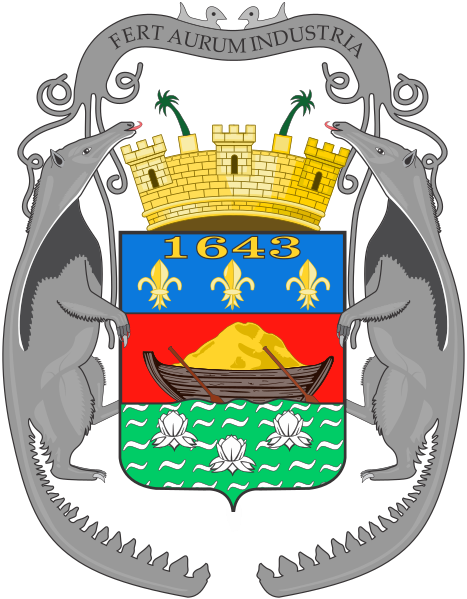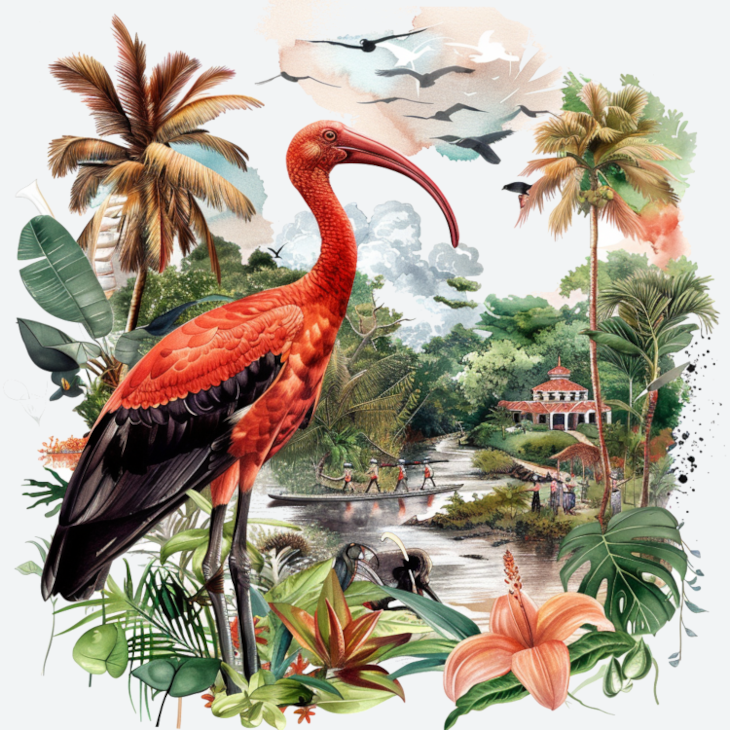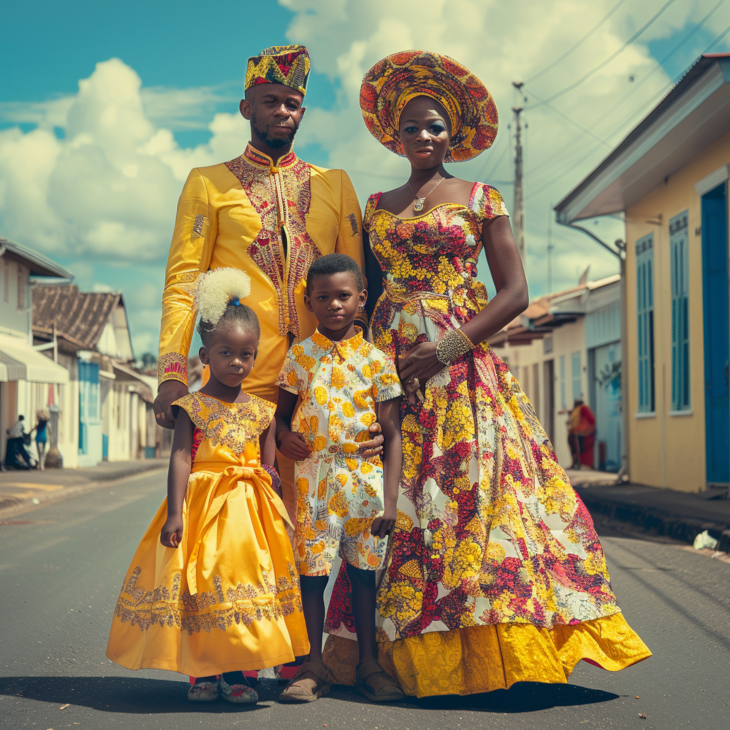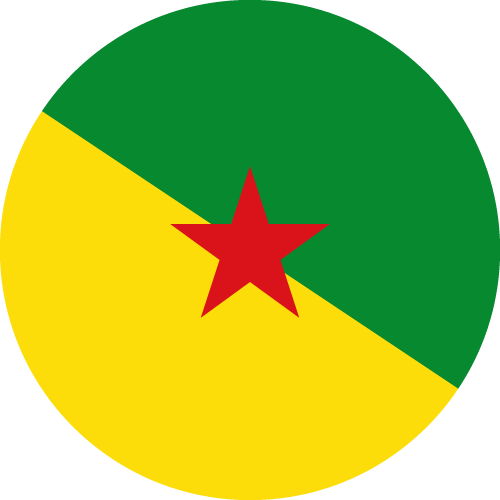About GF

Location
French Guiana is an overseas department and region of France located on the northeastern coast of South America, bordered by Brazil to the south and east, Suriname to the west, and the Atlantic Ocean to the north.
Capital
The capital city of French Guiana is Cayenne, which is also the largest city in the territory.
Population
As of the latest estimates, French Guiana has a population of approximately 298,682 people.
Area
French Guiana covers a total land area of about 83,534 square kilometers (32,253 square miles).
Government
French Guiana is an integral part of France and is governed by the same laws and institutions as mainland France. It is represented in the French Parliament by two deputies and one senator. Administratively, it is divided into two arrondissements (administrative districts) and further divided into communes (municipalities).
Language
The official language of French Guiana is French, as it is an overseas department of France. However, various other languages are spoken in the region, including Guianese Creole, Haitian Creole, and various indigenous languages.
Economy
French Guiana's economy is largely dependent on mainland France, with significant financial support provided by the French government. The territory's economy is primarily based on agriculture, mining (especially gold mining), fishing, and forestry. It also benefits from the presence of the Guiana Space Centre, a major European spaceport operated by the French Space Agency (CNES) and the European Space Agency (ESA).
Culture
French Guiana has a diverse cultural heritage shaped by its indigenous, African, European, and Asian influences. Traditional indigenous cultures are still practiced, alongside Creole traditions and customs brought by African and European settlers. The territory celebrates various cultural festivals and events throughout the year, showcasing its rich diversity.
Environment
French Guiana is known for its pristine rainforests, biodiversity, and unique ecosystems. It is home to a wide variety of flora and fauna, including many endangered species. The territory also contains the Guiana Amazonian Park, one of the largest protected areas in the world.
Challenges
French Guiana faces challenges related to economic development, social inequality, and environmental conservation. Despite its natural resources and potential for economic growth, the territory experiences high levels of poverty and unemployment, particularly in remote and rural areas. Additionally, environmental conservation is a concern due to deforestation, illegal gold mining, and threats to biodiversity.

National Items of French Guiana
Ibis Rouge (Scarlet Ibis)
The Scarlet Ibis (Eudocimus ruber) is one of the most notable bird species in French Guiana. Its vibrant red plumage symbolizes the rich biodiversity and natural beauty of the region.
Victoria Amazonica
The Victoria Amazonica, or Giant Water Lily, is a prominent plant species found in French Guiana. It represents the unique and diverse flora of the area, often seen in the marshy regions of the Amazon basin.
Guyanese Forest
The dense and extensive Guyanese forest, part of the Amazon Rainforest, symbolizes the lush natural environment and the importance of conservation in French Guiana.
Cayenne Pepper
Cayenne pepper, also known as "piment de Cayenne," is a significant agricultural product from the region. It represents the culinary traditions and agricultural heritage of French Guiana.
Awara Fruit
The Awara fruit, from the Mauritia flexuosa palm, is commonly used in traditional dishes such as "bouillon d'awara." It symbolizes the region's culinary heritage and the use of native ingredients.
Creole Culture
Creole culture in French Guiana is a blend of African, European, and Indigenous influences. This cultural mix is represented through traditional music, dance, and cuisine, symbolizing the diverse heritage of the region.
Spaceport (Centre Spatial Guyanais)
The Guiana Space Centre is a major spaceport located near Kourou. It symbolizes modern technological advancements and international collaborations in space exploration.
Traditional Pirogue
The traditional pirogue, a type of canoe used by Indigenous peoples and local communities, symbolizes the connection to waterways and traditional lifestyles in French Guiana.
Harpy Eagle
The Harpy Eagle (Harpia harpyja), one of the largest and most powerful eagles, is found in the rainforests of French Guiana. It represents the country's rich wildlife and the importance of conservation.
Carnival
The Carnival in French Guiana, particularly in the city of Cayenne, is a vibrant cultural event that includes parades, music, and dance. It symbolizes the lively cultural heritage and communal celebrations.

While the lyrics of "La Marseillaise" reflect the spirit of the French Republic and its struggles for freedom and justice, they are not specific to any particular overseas department or region.
French Guiana, being an overseas department and region of France, does not have its national anthem. The national anthem of France, "La Marseillaise," represents the entire French Republic. Here are the lyrics in French along with an English translation:
Allons enfants de la Patrie,
Le jour de gloire est arrivé!
Contre nous de la tyrannie
L'étendard sanglant est levé, (bis)
Entendez-vous dans les campagnes
Mugir ces féroces soldats?
Ils viennent jusque dans nos bras
Égorger nos fils, nos compagnes!
Aux armes, citoyens,
Formez vos bataillons,
Marchons, marchons!
Qu'un sang impur
Abreuve nos sillons!
Arise, children of the Fatherland,
The day of glory has arrived!
Against us, tyranny's
Bloody standard is raised, (repeat)
Do you hear, in the countryside,
The roar of those ferocious soldiers?
They're coming right into your arms
To cut the throats of your sons, your companions!
To arms, citizens,
Form your battalions,
Let's march, let's march!
Let impure blood
Water our furrows!


